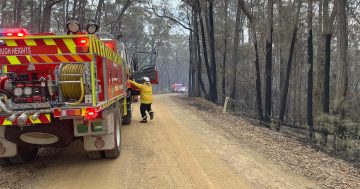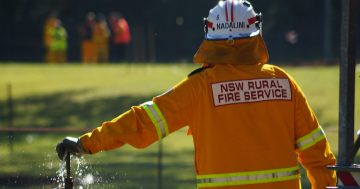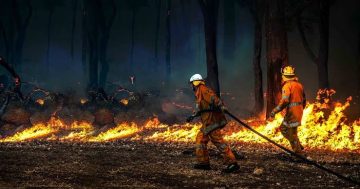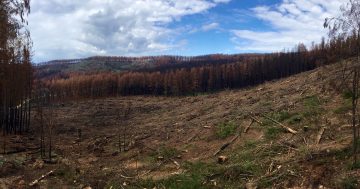
New fire rating signs will be rolled out across the state. Photo: RFS NSW.
The state’s new fire danger signs will be rolled out from 1 September, strengthening the ability of fire authorities to accurately communicate bushfire risk to communities.
The new Rural Fire Service (RFS) signboards are part of the revised Australian Fire Danger Rating System (AFDRS), and will bring New South Wales into line with the rest of the country.
From the first day of spring, communities across Australia will be able to clearly understand bushfire risks and make appropriate decisions to keep them safe using the same signage system.
The new signage has reduced the fire rating categories from six to four – Moderate, High, Extreme and Catastrophic.
The new Australian Fire Danger Rating System has been developed using the latest science to be more accurate and relevant and is the most extensive change in the assessment and use of FDRs since they were first rolled out in the 1960s.
According to the RFS, social science research strongly showed that the communities preferred an optimised and simplified version of the fire rating system with four levels, a colour palette of green, yellow, orange and red and rating names of Low, Moderate, High and Extreme.
They highlighted the need for supporting messaging to be clear, concise and action orientated.
The green level, Moderate, instructs people to plan and prepare – stay up to date and be ready to act if there is a fire.
The yellow level – High – instructs people to be ready to act – there’s a heightened risk. Be alert for fires in your area. Decide what you will do if a fire starts. If a fire starts, your life and property may be at risk. The safest option is to avoid bushfire risk areas.
The orange level – Extreme – means take action now to protect your life and property. These are dangerous fire conditions. Check your bushfire plan and ensure that your property is fire ready. If a fire starts, take immediate action. If you and your property are not prepared to the highest level, go to a safer location well before the fire impacts. Reconsider travel through bushfire risk areas.
The red level – Catastrophic – instructs people to leave bushfire risk areas. These are the most dangerous conditions for a fire. Your life may depend on the decisions you make, even before there is a fire. Stay safe by going to a safer location early in the morning or the night before. Homes cannot withstand fires in these conditions. You may not be able to leave, and help may not be available.
READ ALSO: The place where horses help humans heal – and vice versa
According to the RFS, the science underpinning the existing fire danger ratings has largely remained unchanged for more than 50 years and, during that time, the understanding of fire and fire behaviour has changed.
In recent years, fire agencies have mapped the vegetation across the entire country. So instead of the current system using just bush and grass to determine the fire danger, the new system will use eight types of vegetation – making it more accurate.
Using the latest science, fire agencies like the NSW RFS will be able to better assess the conditions and the consequences of a fire, if one were to start.
The new national system also uses extensive community research, to deliver a simplified approach to communicating bushfire danger ratings.















